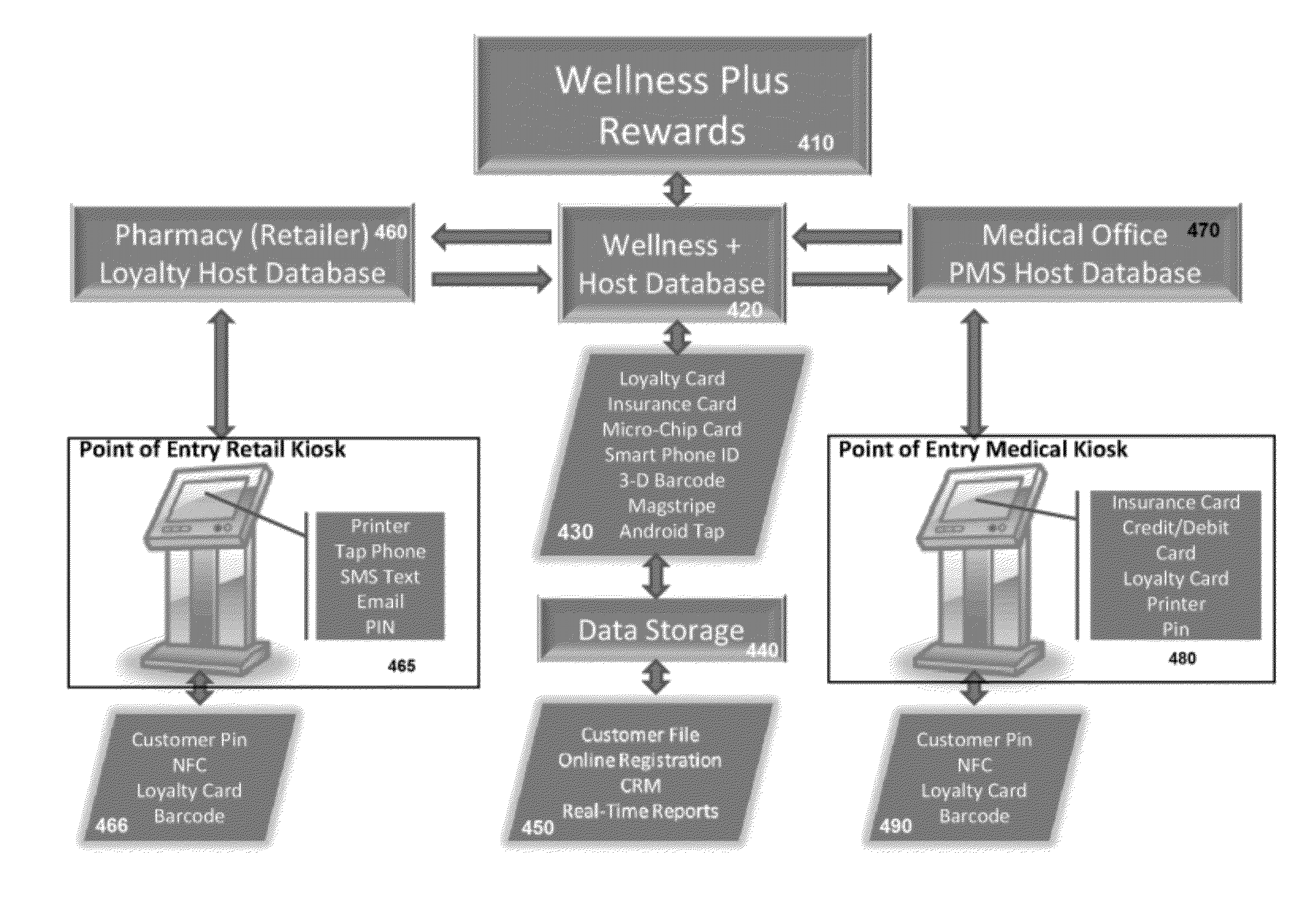Merchantsellect point-of-entry kiosk loyalty system & prepaid card deposit and loyalty kiosk device
a loyalty system and kiosk technology, applied in the field of point-of-entry (poe) customer loyalty system, can solve the problems of low redemption rate for such coupons, skewed demographic data obtained from coupon redemption, loss of marketing opportunity, etc., and achieve the effect of reducing long-term care and overall costs, and burden reduction
- Summary
- Abstract
- Description
- Claims
- Application Information
AI Technical Summary
Benefits of technology
Problems solved by technology
Method used
Image
Examples
second embodiment
[0112]FIG. 3 is a block diagram of the present invention, the Payroll Loyalty Kiosk. The Payroll-Loyalty Kiosk 320 may work in concert with the MerchantSellect POE Kiosk previously described, with different features and functionalities. Alternately, the Payroll Loyalty Kiosk may be combined with the MerchantSellect POE Kiosk into one unit. Referring to FIG. 3, the kiosk 320 may be specifically used as an alternative to live payroll checks and would function much the same as a checking account direct deposit network interchange debit card. The kiosk 320 may dispense either a general purpose reloadable prepaid or award cards. The card may be used for payroll, training and safety awards, bonus awards, and the like. The cards may be loaded in the kiosk 320 and would have value place upon it by a ACH transfer or via a cash receptor 310 that is built into the kiosk 320. The payroll card / award card may also be used as a loyalty card within an established retailer shopper loyalty program 34...
third embodiment
[0119]FIG. 4 is a block diagram of the present invention. The POE Wellness 480 kiosk may offer some of the same technical features and functionality that the Retail POE kiosk 465, (similar to that of FIGS. 1 and 2) provides, with additional features target to the hospitals, medical clinics, doctor offices and pharmacies. The recent Health Care Act has placed a larger burden on the medical provider to electronically track and store patient health information. A key factor is to shift more medical attention to preventative measures and screening to eradicate diseases in the earlier stages and subsequently reduce long term care and overall costs. As a result, the outdated paper-processing and record keeping is now required to be stored and transferred electronically for processing of both insurance and government acceptance of medical claims.
[0120]The cornerstone for storing of patient records is the various Patient Management Systems (PMS) available today for both hospitals and doctor...
fourth embodiment
[0130]FIG. 5 is a block diagram of the present invention. The embodiment of FIG. 5 represents an alternative embodiment of the system of FIG. 4, with the components arranged in a more simplified manner. The POE Wellness Kiosk 580 may act as a virtual front office receptionist. The patient may electronically swipe or cell phone tap and activate the kiosk using an insurance card with mag-stripe, chip, NFC, smart phone or the Wellness Plus Rewards card to check in as illustrated by block 590. Required patient information and insurance related forms would be completed at the kiosk, updating the PMS system database 570 and then alerting the head office of the patient's check-in. Other general information may be offered to the patient at the kiosk from future doctor patient physical scheduling to newly released drugs available relative to the patient's medical records as well as the anticipated co-payment required for the visit, to general health related information. Based upon the patien...
PUM
 Login to View More
Login to View More Abstract
Description
Claims
Application Information
 Login to View More
Login to View More - R&D
- Intellectual Property
- Life Sciences
- Materials
- Tech Scout
- Unparalleled Data Quality
- Higher Quality Content
- 60% Fewer Hallucinations
Browse by: Latest US Patents, China's latest patents, Technical Efficacy Thesaurus, Application Domain, Technology Topic, Popular Technical Reports.
© 2025 PatSnap. All rights reserved.Legal|Privacy policy|Modern Slavery Act Transparency Statement|Sitemap|About US| Contact US: help@patsnap.com



